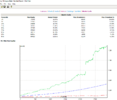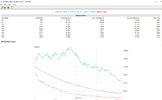MovingAverage
Just a retail hack
- Joined
- 23 January 2010
- Posts
- 1,315
- Reactions
- 2,565
Yes, those that base their decision to go live following a few optimisations and a single run backtest I would definitely say you’re correct.What becomes very clear, quite quickly, is that many systems traders do not have and/or do not understand what is an 'edge'.
jog on
duc





